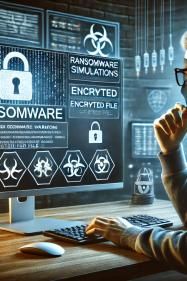Remote Access Trojans (RATs) are a dangerous form of malware that allows cybercriminals to gain unauthorized access and control over an infected computer or network. Understanding the risks posed by RATs and how to defend against them is crucial for maintaining a secure digital environment. This article will break down the dangers of remote access trojans and share effective strategies for detection and remediation.
What Are Remote Access Trojans?
Remote Access Trojans are malicious programs disguised as legitimate software. Once installed, they give hackers remote control over a victim’s system. Unlike other types of malware, RATs are often designed to operate in stealth, enabling attackers to remain undetected for extended periods. They can be used to steal sensitive data, install additional malware, or even spy on the victim through the device’s camera or microphone.
Risks of Remote Access Trojans
RATs pose significant security risks to both individuals and businesses. These risks include:
- Data Theft: Attackers can steal sensitive information, such as login credentials, financial data, or proprietary company information.
- Unauthorized Access: Cybercriminals can access files, monitor user activity, and even control system resources.
- Further Exploitation: RATs are often used as a gateway for launching other cyberattacks, including ransomware and data breaches.
Detecting and Mitigating Remote Access Trojans
Detection Strategies
- Anomalous Network Activity: Unusual traffic, especially connections to unfamiliar IP addresses, may indicate the presence of a RAT.
- Behavior Monitoring: Look for unexpected system behavior, such as applications running without user initiation.
- Security Tools: Employ endpoint protection tools and firewalls that can detect and block suspicious activity.
Remediation Strategies
- Isolate the Infected Device: Disconnect the compromised device from the network immediately to prevent further damage.
- Run a Full Security Scan: Use updated antivirus and anti-malware tools to identify and remove the RAT.
- Patch and Update: Ensure all systems and applications are up to date to close vulnerabilities that RATs exploit.
By staying vigilant and proactive, you can minimize the risks posed by remote access trojans and protect your network from malicious attacks.

